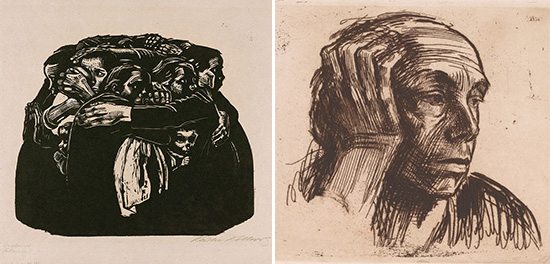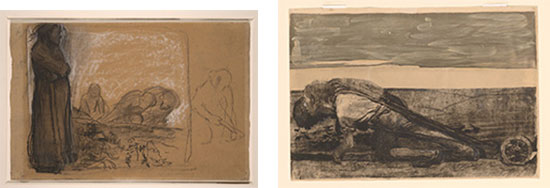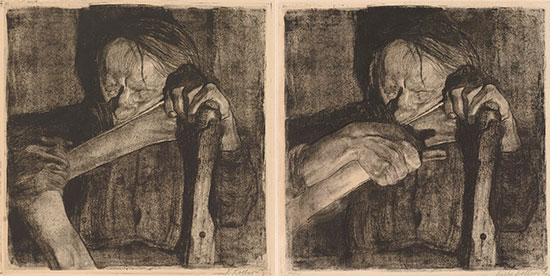Dr. Richard A. Simms Collection
Dr. Richard A. Simms collection of prints and drawings by Käthe Kollwitz and other artists
|
The Dr. Richard A. Simms Collection is recognized in the United States and Europe as an indispensable resource for the study of German art and history from the late 19th to the early 20th century, and particularly of the work of Käthe Kollwitz (1867–1945). Assembled by Simms over a period of 40 years, the core of this partial donation consists of original etchings, woodcuts, lithographs, and drawings by Kollwitz, one of the great artists of the modern period whose name invokes unforgettable images of the human condition—war, protests, suffering, solidarity, family, mourning, and social justice expressed by powerful representations of the human body.
|

|
|
Comprising more than 650 works on paper, including prints, working proofs, and drawings, as well as books, portfolios, and artists' letters, the collection is in part a generous donation from Simms, who is the founding chair of the Getty Research Institute Council. Seeking to explore Kollwitz's artistic and historical contexts, Simms became a self-taught expert of the period and carefully assembled a coherent group of related works by her contemporaries, including a remarkable collection of prints and drawings by Max Klinger (1857–1920), prints and drawings by her second teacher, Karl Stauffer-Bern (1857–1891), as well as works by Ernst Barlach (1870–1938), George Grosz (1893–1959), and Otto Greiner (1869–1916). Believing that the tension between art and documentation could only be resolved if she devoted her energies to works on paper, Kollwitz turned her back on painting after reading Klinger's Malerei und Zeichnung (Painting and Drawing), the single most influential artistic tract of the period.
|

|
|
For Kollwitz, prints and drawings unveiled the world, both politically and artistically, in ways that painting could not. Kollwitz's struggle, as the Simms collection reveals, manifested itself in a slow and deliberate working process with the production of numerous working proofs—unfinished prints upon which she would draw and visually rethink what she had made while planning another part of the composition, before returning to the copperplate, woodblock, or lithographic stone. It is precisely the process of production as recorded in Kollwitz's drawings, proofs, and finished prints that gives this collection its remarkable depth.
|

|
|
Because Kollwitz adhered to figurative art in an era of increasing and colorful abstraction and because she was a woman in a field dominated by men, her experimental techniques, working methods, and creative processes have not always received the attention they deserve. This was especially true when Simms began collecting her work some 40 years ago. More than any collector and most scholars, Simms understood Kollwitz's centrality to modern art and he envisioned building a study collection of drawings, preparatory studies, working proofs, and finished works that would demonstrate the evolution of her creative process and allow for a glimpse of her "thinking on paper." There is no other single private collection in the United States that can effectively demonstrate this artist's radical impact on early 20th-century art, while showing the uncompromising boldness of Kollwitz's vision and the depth of her commitment to her own artistic process.
|
